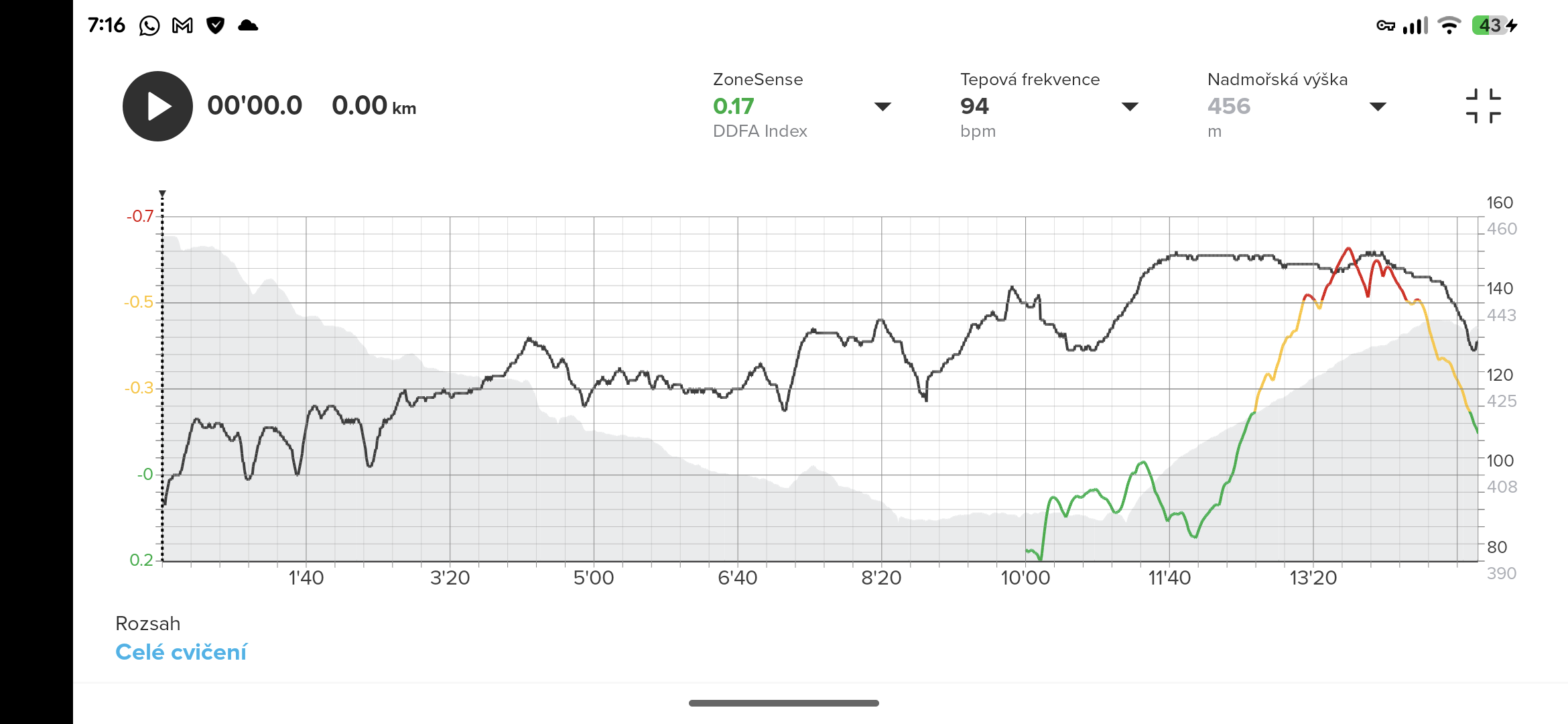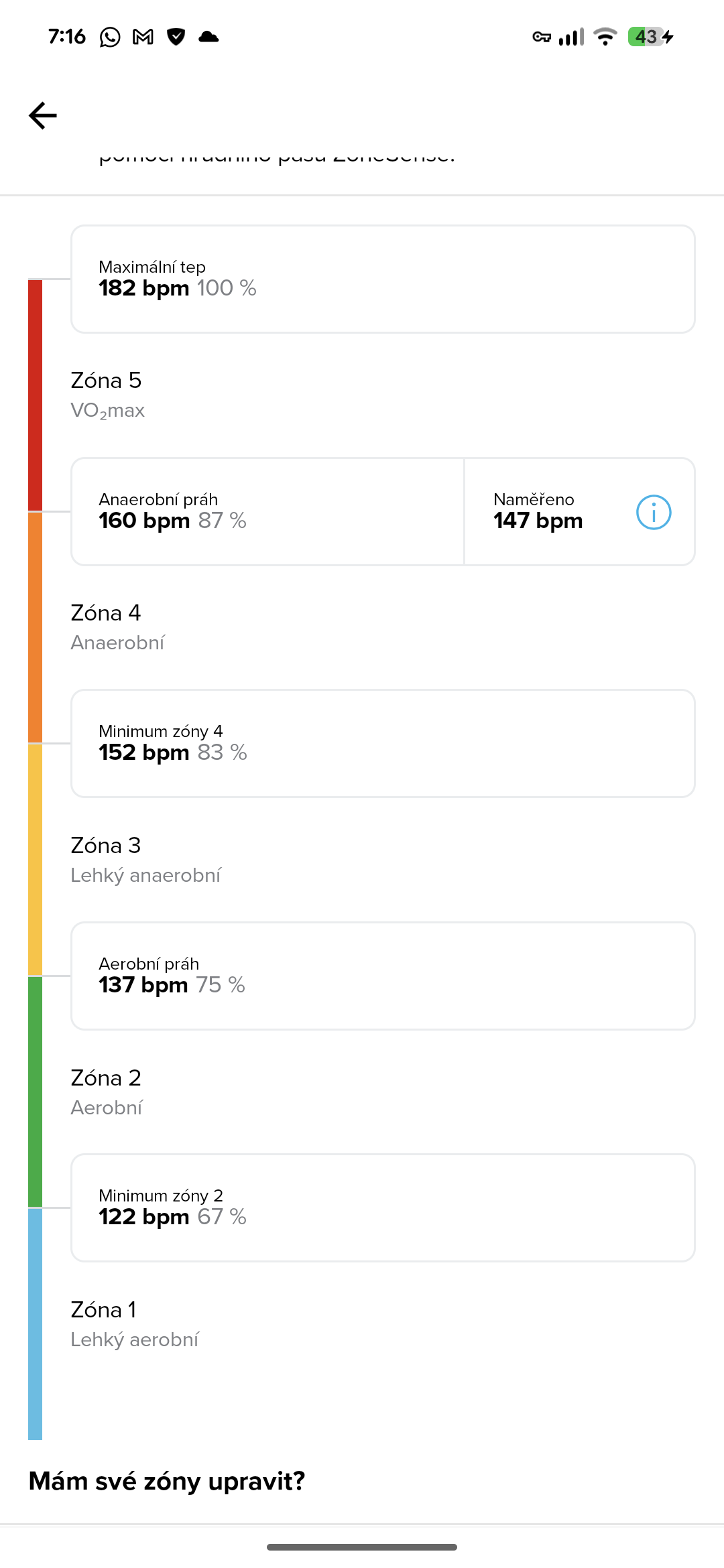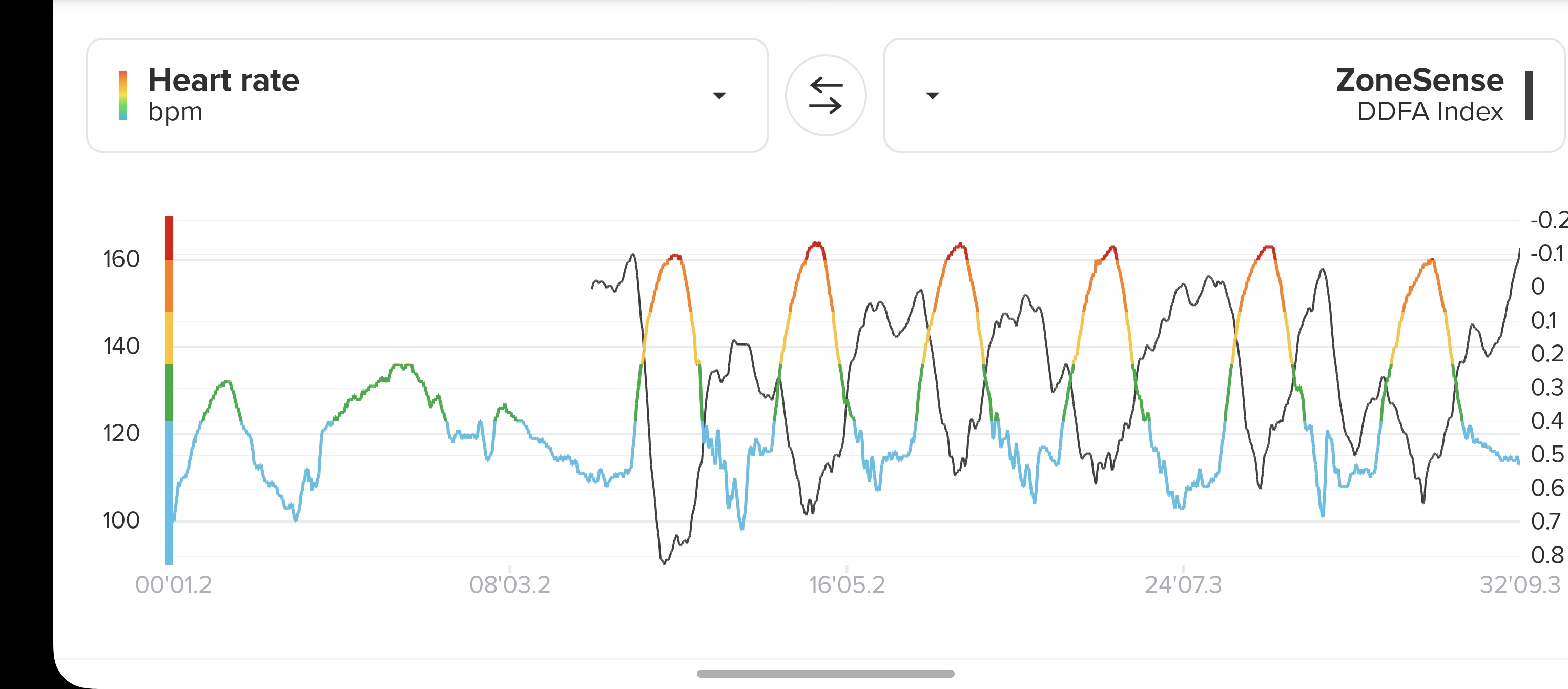Zonesense readings
-
@Brad_Olwin I still have my Polar chest strap and watch from 1993. What surprises me today is the exponential acceleration of tech development. I’m going to work on several proposed fixes for the HRV quality from the H10+ - I’ve already unpaired it and re-paired it - done a soft reset on the watch - cleaned the plastic and metal of the strap with 95% alcohol and adjusted the tightness of the strap around my ribcage (but I can still breathe).
If your runs are 50k to 100 miles I assume you are pretty much aerobic all the time. When I remain aerobic on a bike ride or run I’m not getting any of the remaining problems that I’ve been I’ve been getting with the equipment - seems it gets a lot more affected by high intensity work. If working on the strap as described above doesn’t bring results I’ll get a Suunto strap and hope for the best.
-
@Brad_Olwin yeah, for me it’s different. I don’t trust ZS on individual runs/real-time at all but averaging detected thresholds over a lot of runs could be quite accurate at one point, I think. Would like to compare these values with my measured thresholds. But there is no way to get these averaged values from the watch or app, or?
So you mainly do trail running with some hills/mountains?
For calculating TSS this is really challenging, what do you use if you don’t use TSS(hr)? Or do you not use TSS at all?
I originally come from road running where TSS with correctly set HR zones is really good. On long steady efforts it is almost in line with TSS(hr) while it also gives really good results for shorter intervals where TSS(hr) is not that accurate due to the slow responsiveness of the HR.
with correctly set HR zones is really good. On long steady efforts it is almost in line with TSS(hr) while it also gives really good results for shorter intervals where TSS(hr) is not that accurate due to the slow responsiveness of the HR.
Now that I do a lot of trail running recently, I found TSS to be not that good because of the elevation. Think TSS(hr) might be probably best…What is your experience?
to be not that good because of the elevation. Think TSS(hr) might be probably best…What is your experience? -
@Ian-Beveridge I use the same H10 for almost 5 years now and never really had any problems with it. Whether it was Polar, Garmin or now Suunto. Or course, I changed the belt (only the strap, not the transmitter) about every year, as they wear down and then they cause some drop outs under difficult conditions. I know you said your belt is quite new, but maybe your strap is faulty. If you are willing to spend some money for testing, you could try to just order a new strap and see if that solves the issues.
-
@brave_dave Thank you for the “replacement strap” idea - I just realised that I actually have a very new “compatible” strap available that I can run a test with.
I see by using an AI search that the H10 is the most highly rated of the chest sensors in general so I’ll persist in trying to get it to perform.
-
@brave_dave said in Zonesense readings:
@Brad_Olwin yeah, for me it’s different. I don’t trust ZS on individual runs/real-time at all but averaging detected thresholds over a lot of runs could be quite accurate at one point, I think. Would like to compare these values with my measured thresholds. But there is no way to get these averaged values from the watch or app, or?
I do not worry about thresholds anymore……if I did not have to set them on the watch I wouldn’t and would prefer 3 zones set by ZS and updated automatically. When I am fresh my ZS zones match my lab tests….most of the time I am not fresh and I am amazed at how ZS can vary. It matches RPE well for me and is a useful tool.
So you mainly do trail running with some hills/mountains?
Yes, I Iive near Boulder, Colorado and run year round but also ski tour and ski mountaineering in the winter. All my runs except Recovery have a minimum of 300m elevation gain/loss for each hour to 1.5h, sometimes a lot more.
For calculating TSS this is really challenging, what do you use if you don’t use TSS(hr)? Or do you not use TSS at all?
Since TSS(hr) is not that accurate (steep downhill technical terrain or slow uphill technical terrain) I follow suggestions by Uphill Athlete and add 10 TSS for every 300m (1000 feet) of elevation gain AND loss. I then compared this to TSS in Suunto and used TSS(Met). Since TSS(ZoneSense) is now available I have tested and found it to be quite good for me.
I originally come from road running where TSS
 with correctly set HR zones is really good. On long steady efforts it is almost in line with TSS(hr) while it also gives really good results for shorter intervals where TSS(hr) is not that accurate due to the slow responsiveness of the HR.
with correctly set HR zones is really good. On long steady efforts it is almost in line with TSS(hr) while it also gives really good results for shorter intervals where TSS(hr) is not that accurate due to the slow responsiveness of the HR.TSS
 is pretty much useless on our trails.
is pretty much useless on our trails.Now that I do a lot of trail running recently, I found TSS
 to be not that good because of the elevation. Think TSS(hr) might be probably best…What is your experience?
to be not that good because of the elevation. Think TSS(hr) might be probably best…What is your experience?I stated that above, I have used RPE for 15 years now and ZoneSense for me is in line with my RPE except when I have recovery runs where I go too hard and ZS keeps me at the effort I need to.
-
@Brad_Olwin thanks for the insights. Boulder, Colorado is a delightful region! Have been there once.
Yeah, trail running really changes a lot for TSS compared to road running. Impact on cardiovascular system can be quite low while it still can have a high load on muscles, ligaments.
For cycling, I found power to nicely correlated to muscle and cardio load. But the way power is measured in running, it is not really comparable and not really useful.
I might need to have a look at that correction approach. -
@brave_dave I’ve found TSSr to work quite well for my trail runs, I think because Suunto uses NGP rather than average pace. I don’t do anything crazy long, though. My weekly long run is 10-15 miles.
As an example, I had an 8 mile, 1:20’ run with 1,000 feet ascent and descent yesterday. My average HR was right at my Z2/Z3 threshold, with ascents jumping into Z4. Here are the TSS scores for that activity:
TSSr = 89
TSShr = 83
TSSzs = 82
TSSp = 77
TSSmet = 75So TSSr gave the highest score, and, judging from my RPE, the most accurate. I would have scored it right around 90. If I use the Uphill Athlete method (MET + ascent/descent), I get 95, so also a reasonable score.
Maybe TSSr is less reliable on longer efforts, or maybe my zones are just dialed in for trail running, but I’m usually pretty pleased with the calculations.
-
Today I got only Anaerobic TH on same commute. Is that because I spent only a brief moment above the aerobic threshold and a longer period above the anaerobic threshold?


-
@Brad_Olwin @brave_dave
I’ve tried everything suggested so far in attempts to get ZoneSense working for me but it’s not happening. The only thing I haven’t done is to buy another sensor - and I’m not going to do that as My H10+ is only a few months old. I get the impression that people are missing the fact that electrical conductivity in skin changes with age - between the ages of 10 to 70 dropping as much as 60% or 70%. I’m aged 67 and it’s only when pushing high intensity levels for my current fitness level that the ZoneSense degenerates into a mess of HRV artifacts/anomalies. It’s irrelevant that my Suunto app informs me that I have a “fitness age” of 29 - my skin is still 67!
I tried even shaving the hair between my pectorals and lower ribs - dry brushing the skin to remove dead skin and using a commercial electrode gel. Used different straps - impeccably cleaned and tightened - works fine until I hit the accelerator pedal and then it turns into total rat shit.
I get the impression that I need a sensor strap with tiny metal spikes to penetrate the skin - or something like that.Here’s what an AI search dug up…
Skin-mounted electrodes utilizing metalized nano spikes are designed to penetrate the stratum corneum, the outermost layer of the skin, which is typically 10-20 microns thick, to establish low-impedance contact with the conductive tissue in the epidermis.
These nano spikes, approximately 10 microns in length, are sufficient to reach the epidermal layer while avoiding deeper structures like nerve endings and capillaries located 200-300 microns below, thereby minimizing pain and bleeding.
The metalized spikes are integrated onto a flexible, metalized conductive plate attached to an adhesive backing, enabling secure and reliable attachment to the skin without the need for gels, shaving, or skin preparation.
This design facilitates effective transmission of biopotentials such as ECG signals and allows for long-term monitoring, including use as a smart patch for wireless data transfer from implanted medical devices. -
@Ian-Beveridge You could check the resistance to see if your belt is still OK (https://www.youtube.com/watch?v=QXJ0spt9A1E). In the last five years, I had three Polar belts. The first one lasts 4 years (about 300 runs of more or less 45 minutes each). The second one, only a couple of months. From the beginning, I had issues with this belt. The third one, a year and a half old, is still OK. So, even if the belt is “only a few months old” or even brand new, the issue could be there. The resistance I measured for a (good) brand new belt from polar was about 0.7KOhm. And for the second belt, the one that failed after a couple of months, was about 1MOhm when I decided to change it (1000x higher than a brand new).
-
@LGoSo Interesting! My Polar strap measures 3.1 KOhm on one side and 1.6 KOhm the other.
My cheap CooSpo strap measures 0.45 KOhm on one side and 0.62 KOhm on the other side. I haven’t tried the cheap strap with the shaved/brushed skin and Electrode gel yet - but it’s worth another shot.
Also interesting is that manufacturers don’t specify the resistance in product documentation or reviews.It would be interesting if someone could measure the resistance of their Suunto strap.
-
@Ian-Beveridge I am 69 so no issues with age and belts here.
-
@LGoSo It actually worked! Unbelievable! The low resistance (dirt cheap CooSpo) belt - when combined with all the other measures I’ve taken worked 100%. It’s also changed the heart rate upper level and stabilised it at Zone 4 instead of VO2max - despite today being a minute faster over a 6k run than yesterday when my HR jumped for a sustained period in VO2max (H10+ belt). It’s the first time since I started posting here that anything has made sense. The H10+ strap is simply not working properly - and that appears to include BPM as well as HRV. I did need to shave the part of my torso where the strap goes, dry brush the skin and use a proper conductive gel - but the result is solid. When I had previously tried using the low resistance CooSpo strap with a hairy chest and just water the result was messy. Clearly, individual skin conductivity is involved in determining the limitations of the higher resistant straps. Looks like bad quality control in production - though this probably works for most people.
